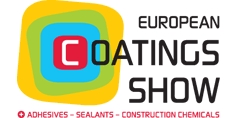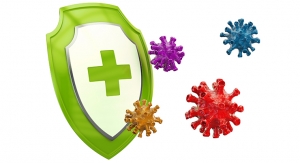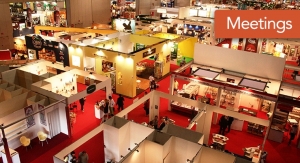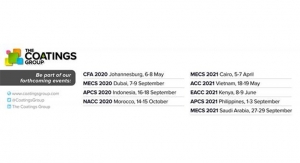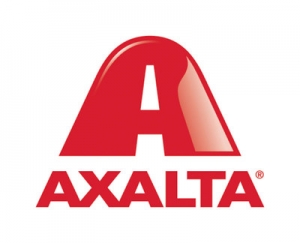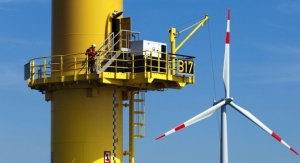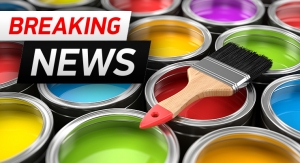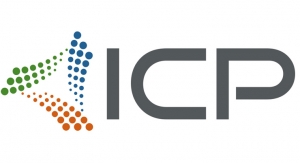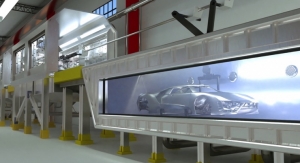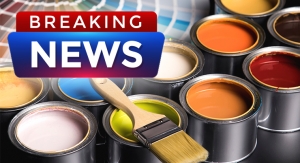Arnold Wang, China Columnist08.09.17
In the first four months of 2017, China produced 5.96 million tons of coatings, increased only 2.6 percent over the same period of last year, proving that the whole coatings industry is slowing down. Due to the launch of new government regulations to adjust the development speed of the real estate property market, the real estate property industry has become relatively soft after entering 2017, but international trade and domestic consumption provide new momentum for many industries, including coatings. For example, for the first four months in 2017, home furniture export volume was increased by 6.1 percent and home furniture sales was increased by 12.9 percent over the same period of last year, leading the growth of wood coatings. The export volume of toys, a major market sector for plastic coatings, was increased by 2.8 percent and total toy sales was increased by 11.3 percent over last year. Besides, the export volume of home appliances was increased by 13.6 percent and their total sales was increased by 15.3 percent. Home appliances uses a lot of metal and plastic coatings during their manufacturing.
Foreign companies dominates industrial coatings markets
Bringing into the Chinese markets advanced technologies and early investments, foreign companies or their joint ventures have gained favorable positions in most industrial coatings sectors, including automotive coatings, coil coatings, wind power coatings, anti-corrosion coatings, ship coatings, etc. It is difficult for other companies to shake their leading positions. And foreign companies also try to grow their market shares through acquisitions and expanding into new regions such as western China in recent years.
But even foreign companies are facing quick changes in the Chinese domestic markets, brought about mainly by new government regulations. For example, around 95 percent of the global container market is held by Chinese companies. China produced 209 thousand tons of container coatings in 2016. The market leaders are almost foreign companies such as Kansai, Chugoku Marine Paints, KCC, Henpel, Valspar and SKS. And the use of container coatings released large volume of VOC into the air before 2016. In other words, China polluted its own air to provide high quality products to the world. But this kind of development is not sustainable for China. It is reported that 67.3 percent of VOC released by container production needs to be reduced until 2020. So almost every major container manufacturer is renovating their painting lines from using solvent-based coatings to using waterborne varieties. And it is estimated that a new standard for limiting the use of solvent-based coatings on container production will be released in 2018, so the time left for container companies to renovate their painting lines is not much now.
Selecting different business strategies, domestic companies strive to break out of the competition circle
Domestic coatings producers have a major presence in architecture related markets, such as waterproof coatings, exterior and interior architecture coatings, wood coatings and so on. These markets are filled with thousands of local coatings companies. Their profit margins are relatively thinner than those of industrial coatings.
But the market is still not lacking in new players. Behr, an American brand introduced into China in 2017 with Home Depot (Home Depot closed their stores in China and withdrawn from the Chinese market), is a foreign brand entering China relatively late. And with their products imported from abroad, their market penetration will be mainly dependent on brand and quality. This is quite difficult for a relatively new brand to grow in a large scale in a market whose domestic brands also have good quality.
Domestic companies, under fierce competition mainly from other domestic counterparts, have to make changes, or face the risk of being eliminated in the market. But with many considerations playing into the decision process, it is hard to say whether their strategies will work in the long term. Financing through stock market is a popular move, but the direct impact to the business is not immediate since the cycle of a new investment, for example, adding a new production line, will take several years to become new profit source for the company.
New capacities are still added into the competitive architecture coatings market in China. On June 28th, Lantiantun put into production their diatomite coatings plant. The new plant, targeting the construction market, has an investment of 350 million yuan($48 million) for phase one and will produce 500 thousand tons architecture coatings and construction materials per year. Founded in 2010, Lantiantun is also making overseas markets including southeast Asia, India and UAE, their primary targets for marketing promotions.
The prosperous development of high speed train industry provides more opportunities for those rail relatd coatings companies. As the first coatings company who serves railway communications, Feilu successfully listed their stock in the market in early 2017. In the first quarter of 2017, Feilu’s sales was increased by 23.3 percent. As a major coatings supplier for high speed train production and railway development, Feilu has met their best growing opportunity in recent years. And the fund raised from the market will provide necessary financial support for Feilu’s several new projects.
Kuangshun, a major PCB ink supplier for electronic devices and another public company in the market, acquired Jiangsu Hongtai in early 2017 with 660 million yuan ($90 million), strengthening its leading position in the UV curing coatings market and expanding their customer base.
Like the American market, the Chinese market is always changing, but unlike American companies, who like to merge with or acquire other companies, Chinese companies are more prone to increasing footsteps and capacities, and these strategies, favored by “professional” business managers, all lead to short term growth, but long term growth normally comes from differentiated products and technologies, resultinh from investments in R&D and close studies of customer needs. And the largest structural change in the Chinese coatings industry in these two years is from solvent-based coatings to water-based coatings, which is driven by government regulations.
Foreign companies dominates industrial coatings markets
Bringing into the Chinese markets advanced technologies and early investments, foreign companies or their joint ventures have gained favorable positions in most industrial coatings sectors, including automotive coatings, coil coatings, wind power coatings, anti-corrosion coatings, ship coatings, etc. It is difficult for other companies to shake their leading positions. And foreign companies also try to grow their market shares through acquisitions and expanding into new regions such as western China in recent years.
But even foreign companies are facing quick changes in the Chinese domestic markets, brought about mainly by new government regulations. For example, around 95 percent of the global container market is held by Chinese companies. China produced 209 thousand tons of container coatings in 2016. The market leaders are almost foreign companies such as Kansai, Chugoku Marine Paints, KCC, Henpel, Valspar and SKS. And the use of container coatings released large volume of VOC into the air before 2016. In other words, China polluted its own air to provide high quality products to the world. But this kind of development is not sustainable for China. It is reported that 67.3 percent of VOC released by container production needs to be reduced until 2020. So almost every major container manufacturer is renovating their painting lines from using solvent-based coatings to using waterborne varieties. And it is estimated that a new standard for limiting the use of solvent-based coatings on container production will be released in 2018, so the time left for container companies to renovate their painting lines is not much now.
Selecting different business strategies, domestic companies strive to break out of the competition circle
Domestic coatings producers have a major presence in architecture related markets, such as waterproof coatings, exterior and interior architecture coatings, wood coatings and so on. These markets are filled with thousands of local coatings companies. Their profit margins are relatively thinner than those of industrial coatings.
But the market is still not lacking in new players. Behr, an American brand introduced into China in 2017 with Home Depot (Home Depot closed their stores in China and withdrawn from the Chinese market), is a foreign brand entering China relatively late. And with their products imported from abroad, their market penetration will be mainly dependent on brand and quality. This is quite difficult for a relatively new brand to grow in a large scale in a market whose domestic brands also have good quality.
Domestic companies, under fierce competition mainly from other domestic counterparts, have to make changes, or face the risk of being eliminated in the market. But with many considerations playing into the decision process, it is hard to say whether their strategies will work in the long term. Financing through stock market is a popular move, but the direct impact to the business is not immediate since the cycle of a new investment, for example, adding a new production line, will take several years to become new profit source for the company.
New capacities are still added into the competitive architecture coatings market in China. On June 28th, Lantiantun put into production their diatomite coatings plant. The new plant, targeting the construction market, has an investment of 350 million yuan($48 million) for phase one and will produce 500 thousand tons architecture coatings and construction materials per year. Founded in 2010, Lantiantun is also making overseas markets including southeast Asia, India and UAE, their primary targets for marketing promotions.
The prosperous development of high speed train industry provides more opportunities for those rail relatd coatings companies. As the first coatings company who serves railway communications, Feilu successfully listed their stock in the market in early 2017. In the first quarter of 2017, Feilu’s sales was increased by 23.3 percent. As a major coatings supplier for high speed train production and railway development, Feilu has met their best growing opportunity in recent years. And the fund raised from the market will provide necessary financial support for Feilu’s several new projects.
Kuangshun, a major PCB ink supplier for electronic devices and another public company in the market, acquired Jiangsu Hongtai in early 2017 with 660 million yuan ($90 million), strengthening its leading position in the UV curing coatings market and expanding their customer base.
Like the American market, the Chinese market is always changing, but unlike American companies, who like to merge with or acquire other companies, Chinese companies are more prone to increasing footsteps and capacities, and these strategies, favored by “professional” business managers, all lead to short term growth, but long term growth normally comes from differentiated products and technologies, resultinh from investments in R&D and close studies of customer needs. And the largest structural change in the Chinese coatings industry in these two years is from solvent-based coatings to water-based coatings, which is driven by government regulations.

